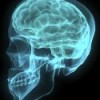The fundamental design concept of Z score biofeedback [also known as Z-Score neurofeedback] was first introduced in 1998 (Thatcher, 1998; 1999; 2000a; 2000b). The central idea of the instantaneous Z score is the application of the mathematical Gaussian curve or ‘Bell Shaped’ curve by which probabilities can be estimated using the auto and cross-spectrum of […]








Recent Comments